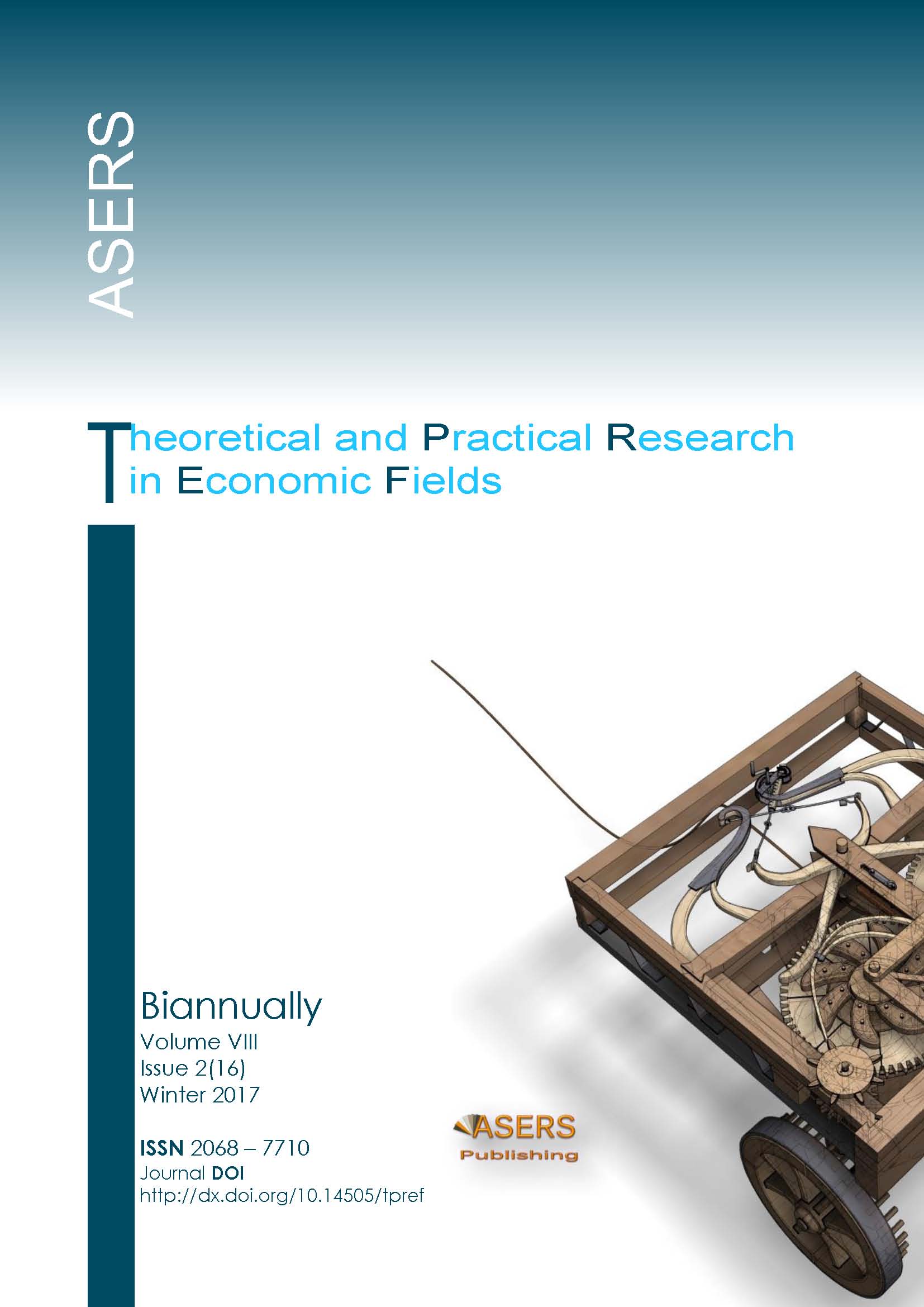INEQUALITY AND GROWTH IN TUNISIA: EMPIRICAL EVIDENCE ON THE ROLE OF MACROECONOMIC FACTORS
Abstract
The purpose of this paper is to explore the relationships between income inequality, economic growth and the main macroeconomic factors in Tunisia. We investigate two effects: the effect of inequality on growth, and particularly, the effect of growth on inequality. Also, attention has been focused on the role of the monetary policy, via introducing money supply as an independent variable, in affecting inequality and growth. Our empirical study is based on a series of annual data from 1975 to 2015 using the Dynamic Ordinary Least Squares (DOLS) method in order to estimate the cointegrating equations. The findings of the paper show that income inequality increase economic growth in Tunisia. Other factors having significant positive effect on economic growth include money supply and life expectancy at birth. However, inflation rate, primary education and unemployment have statistically significant and negative effect on economic growth. On the other hand, the results indicate that money supply, inflation rate, unemployment and savings are positively and significantly related to income inequality, whereas, life expectancy at birth and gross fixed capital formation decrease inequality in Tunisia. The policy implications of these results are discussed.
References
[2] Attanasio, O., and Binelli, C. 2004. Inequality, growth and redistribution policies, Afrique comtemporaine, Proceedings of the AFD/EUDN Conference, 211: 107-139. DOI 10.3917/afco.211.0107.
[3] Barro, R. J. 2000. Inequality and growth in a panel of countries, Journal of Economic Growth, 5(1): 5-32.
[4] Bourguignon, F. 2004. The Poverty-Growth-Inequality Triangle, Paper presented at the Indian Council for Research on International Economic Relations, New Delhi, on February 4, 2004. DOI 10.3917/afco.211.0029.
[5] D’Arvisenet, P. 2015. Inequality and growth: lessons from recent debates, economic-research, BNPparibas-conjoncture, Novembre.
[6] Granger, C.W.J. 1988. Some recent developments in a concept of causality. Journal of Econometrics, 39: 199-211.
[7] Kaldor, N. 1957. A Model of Economic Growth, Economic Journal, 67: 591–624.
[8] Kuznets, S. 1955. Economic growth and income inequality. American Economic Review, 45: 1-28.
[9] Maestri, V., and Roventini, A. 2013. Inequality and Macroeconomic Factors: A Time-Series Analysis for a Set of OECD Countries, Working Paper Series, Department of Economics University of Verona, WP/34, November.
[10] Ncube, M., Anyanwu, J.C., and Hausken, K. 2013. Inequality, Economic Growth, and Poverty in the Middle East and North Africa (MENA), Working Paper, No. 195, December.
[11] Ogbeide, E.N.O, and Agu, D.O. 2015. Poverty and income inequality in Nigeria: any causality? Asian Economic and Financial Review, 5(3): 439-452.
[12] Parker, S. C. 1999. Income Inequality and the Business Cycle: A Survey of the Evidence and Some New Results, Journal of Post Keynesian Economics, 21: 201-225.
[13] Ravallion, M. 1997. Can high-inequality developing countries escape absolute poverty? Economic Letters, 56(1): 51-57.
[14] Sbaouelgi, J., and Boulila, G. 2013. The causality between income inequality and economic growth: empirical evidence from the Middle East and North Africa region, Asian Economic and Financial Review, 3(5): 668-682.
[15] Sboui, F. 2012. Effects of growth and inequality on poverty in Tunisia, Region and Development, 35: 57-80.
[16] Stock, J.H., and Watson, M.W. 1993. A simple estimator of cointegrating vectors in higher order integrated systems. Econometrica, 61: 783-820.
[17] World Health Organization, country cooperation strategy, WHO/CCU/17.01/Tunisia, Updated May 2017.
[18] Yannick, S., and Ekobena, F. 2014. Does monetary policy really affect poverty?, CEP and FED Atlanta workshop, 03-04 avril, pp 01-25.
Non-Exclusive License under Attribution 4.0 International Public License (CC BY 4.0):
This ‘Article’ is distributed under the terms of the license CC-BY 4.0., which lets others distribute, remix, adapt, and build upon this article, even commercially, as long as they credit this article for the original creation. ASERS Publishing will be acknowledged as the first publisher of the Article and a link to the appropriate bibliographic citation (authors, article title, volume issue, page numbers, DOI, and the link to the Published Article on ASERS Publishing’ Platform) must be maintained.
